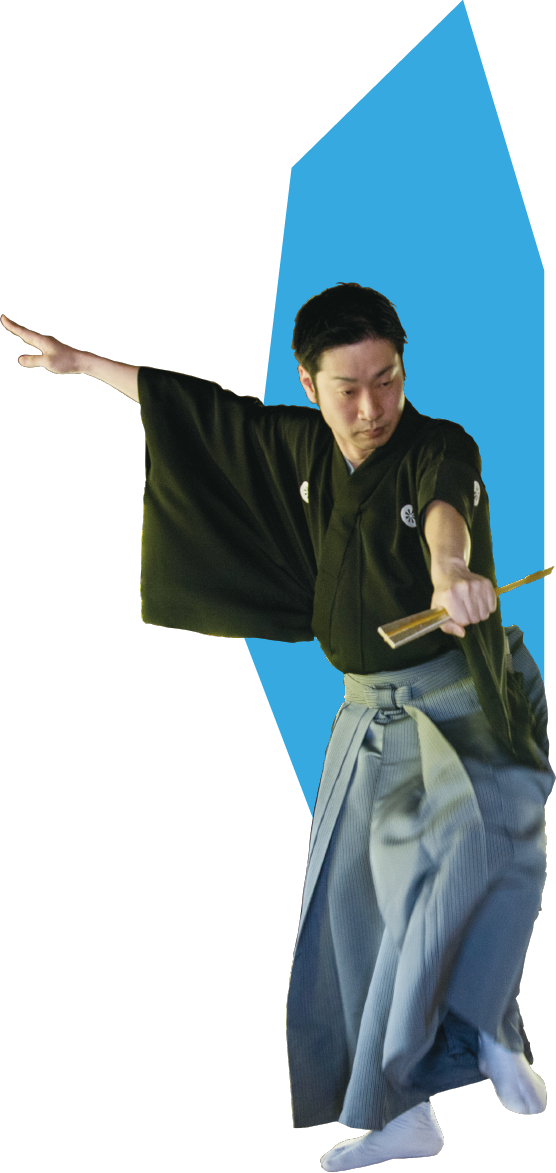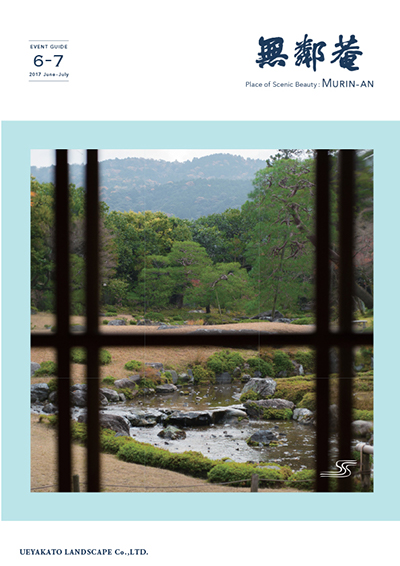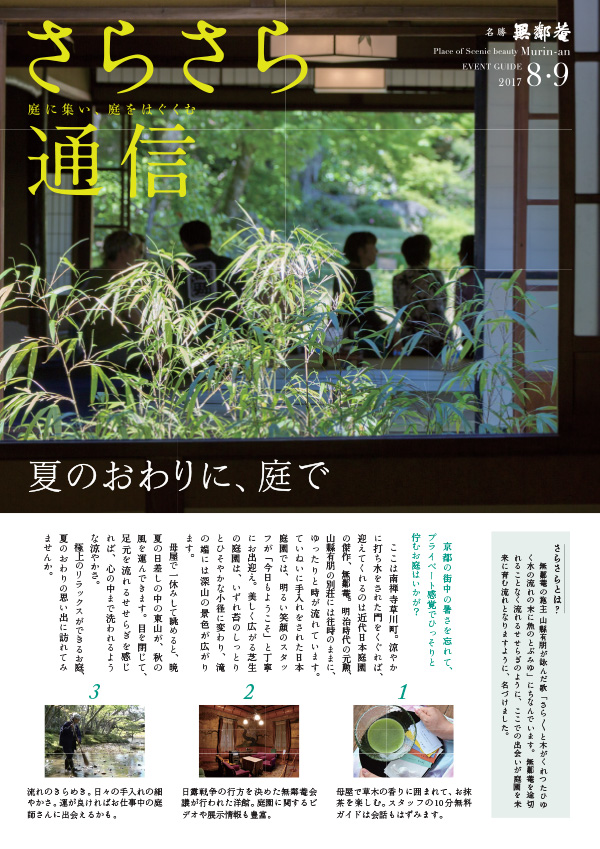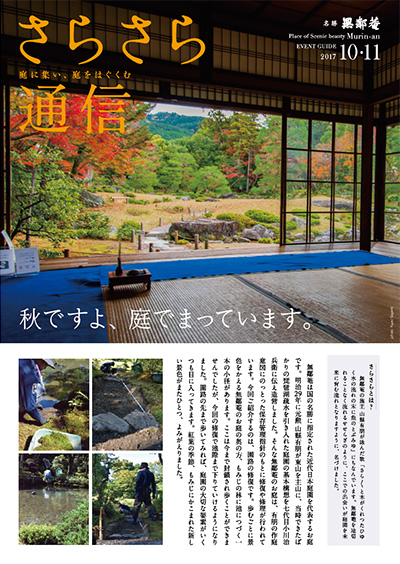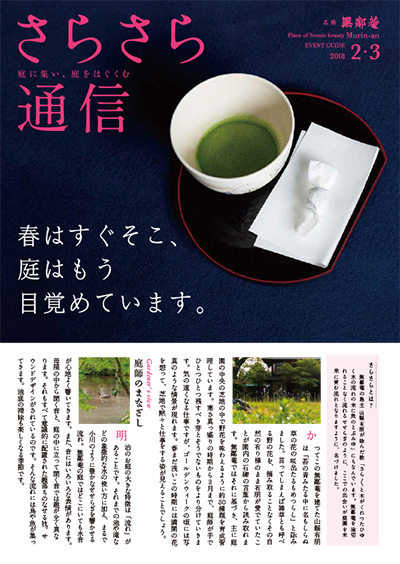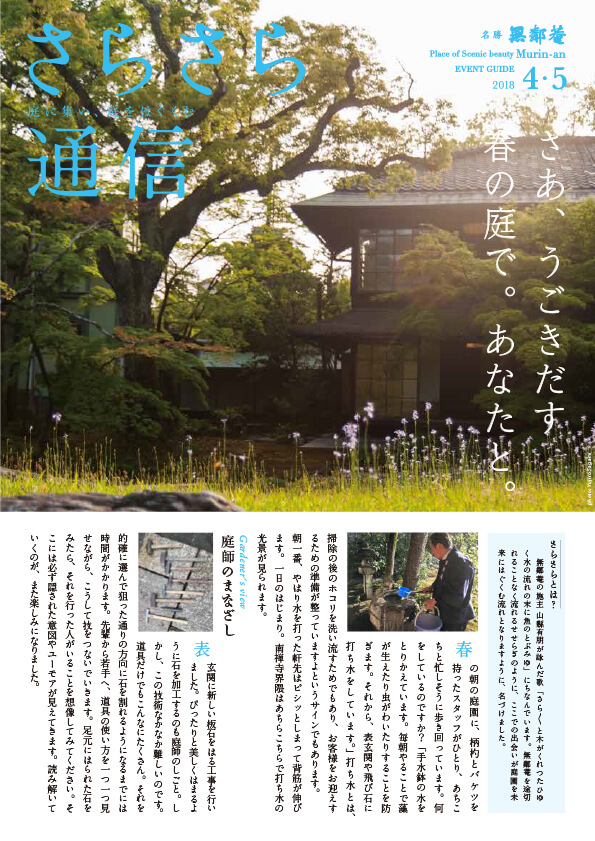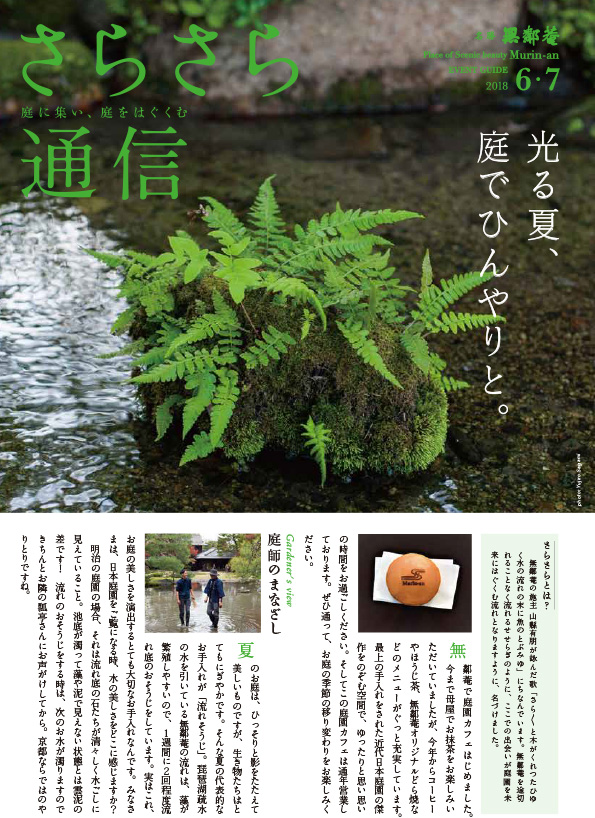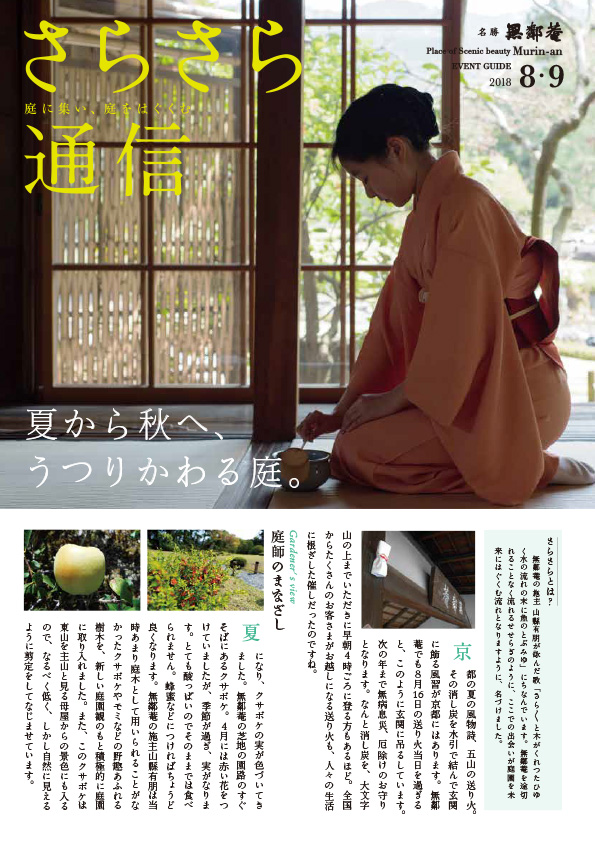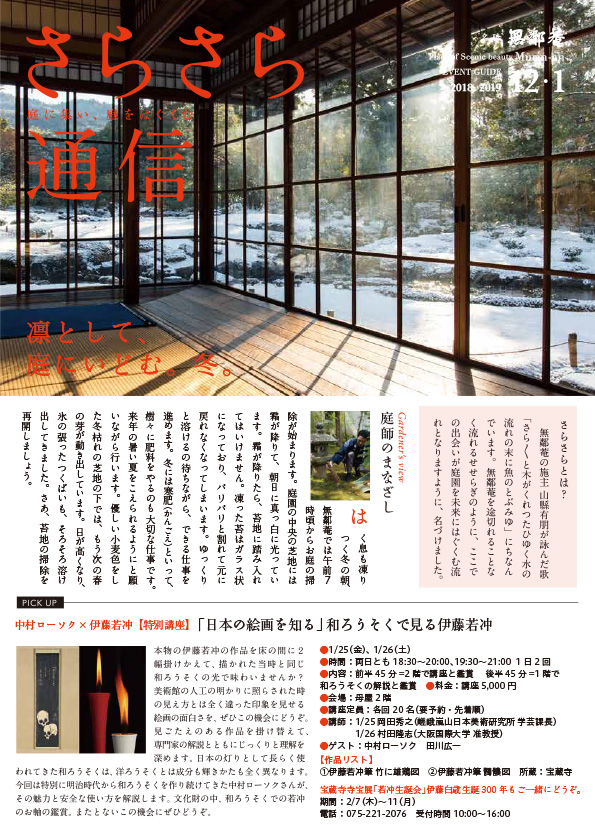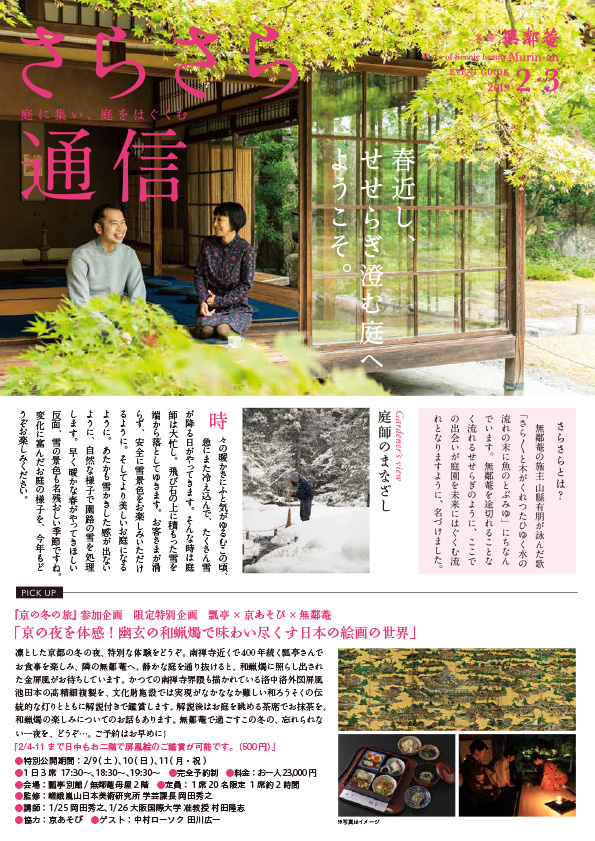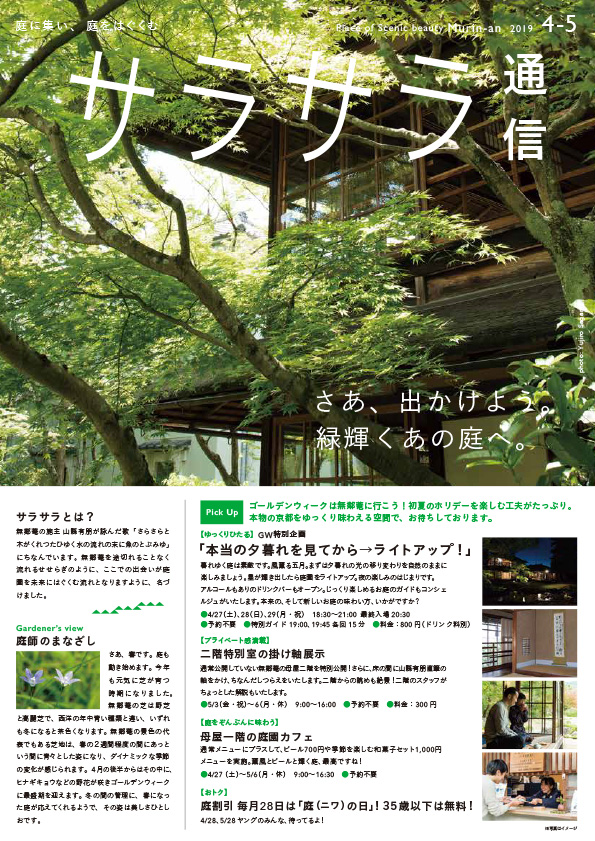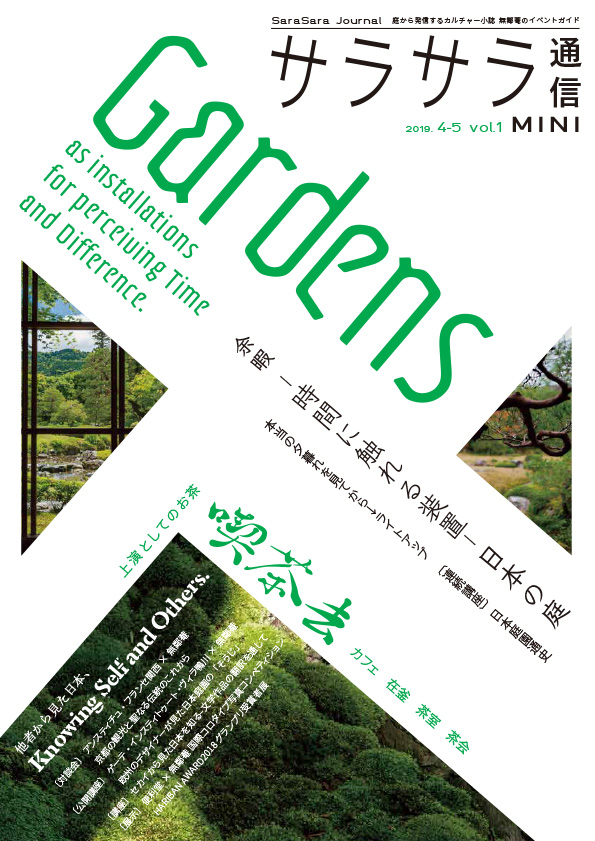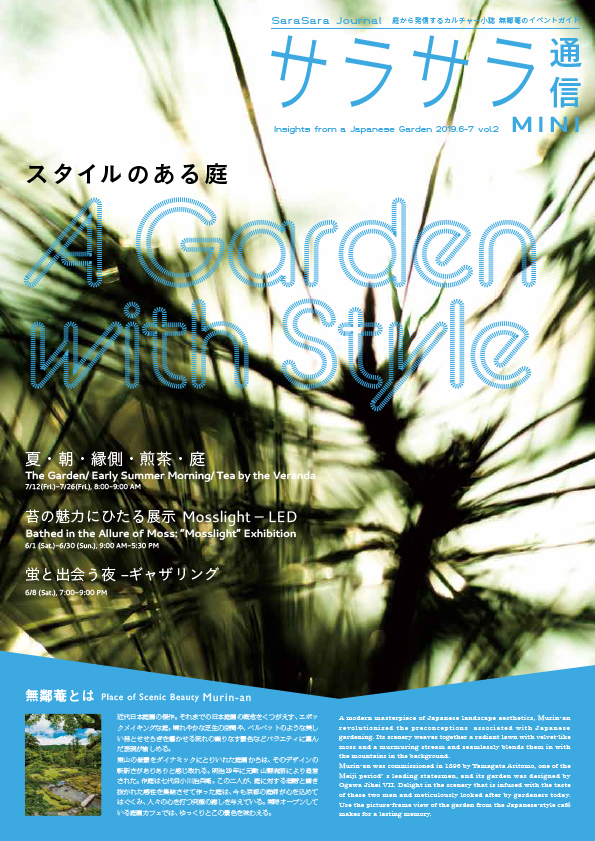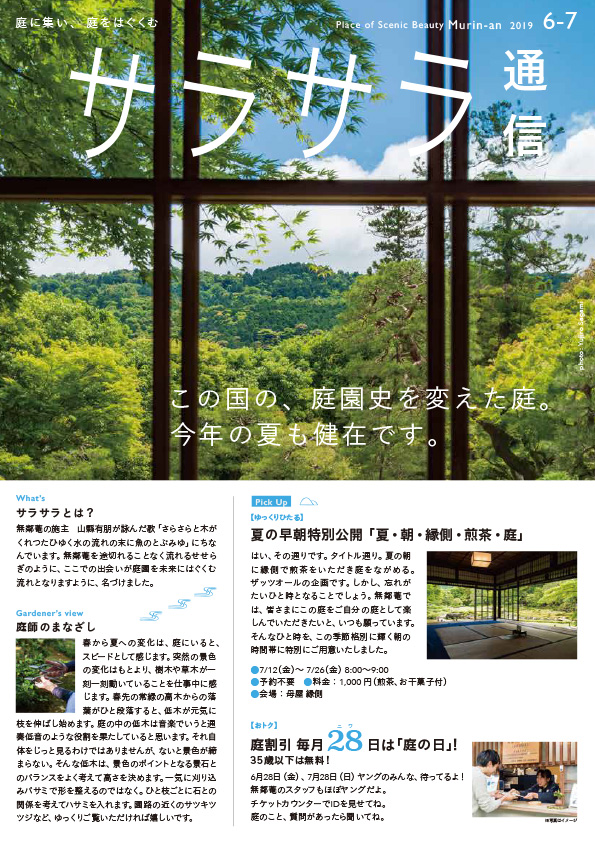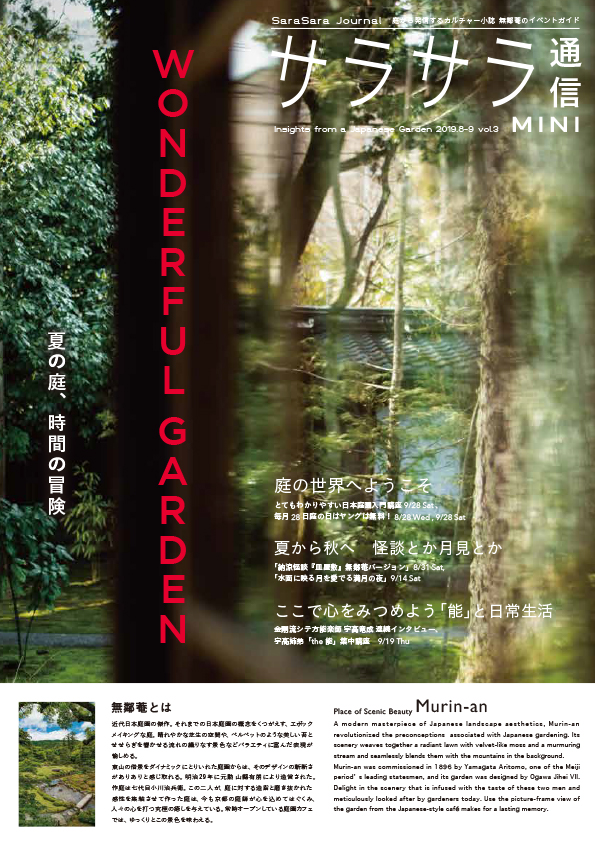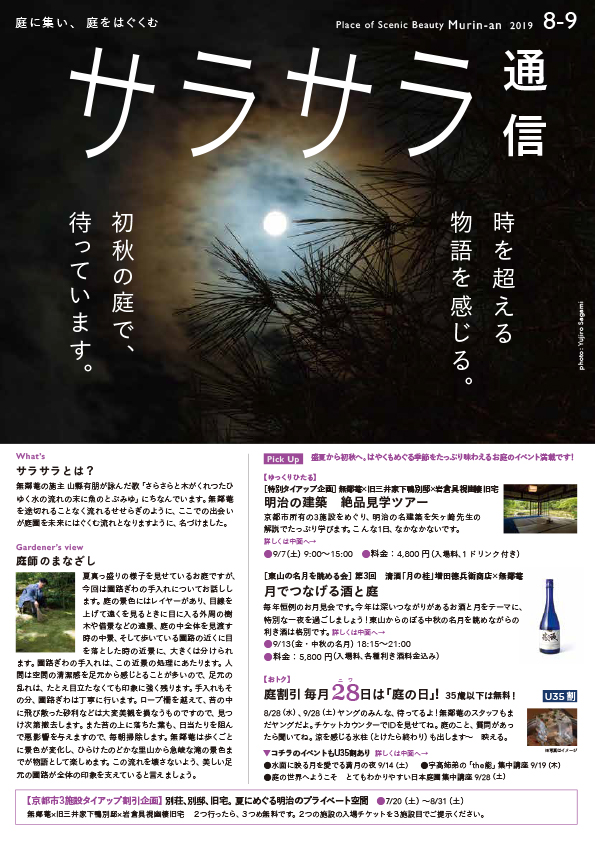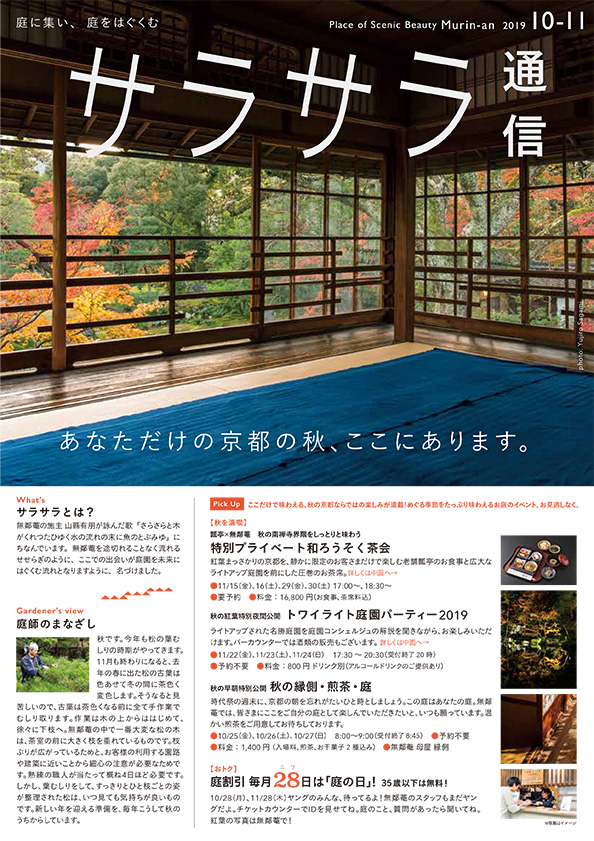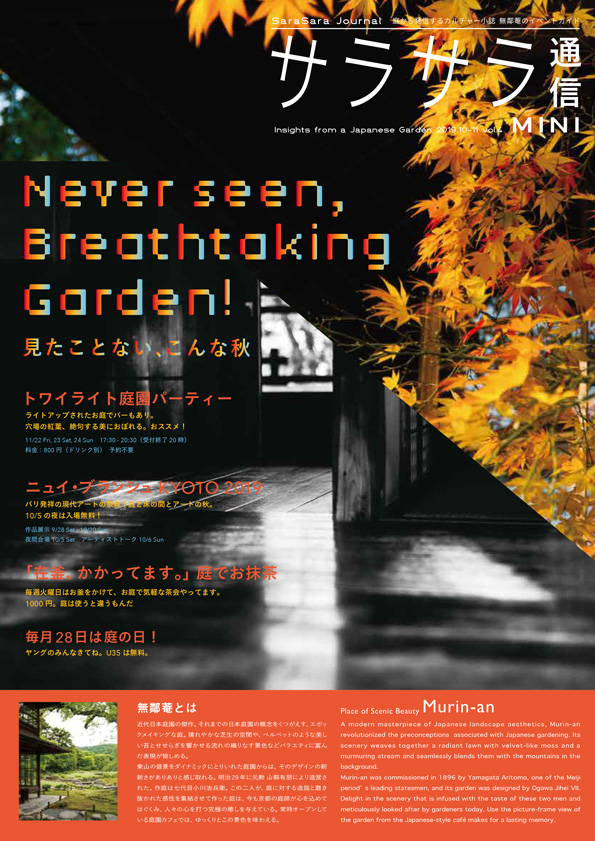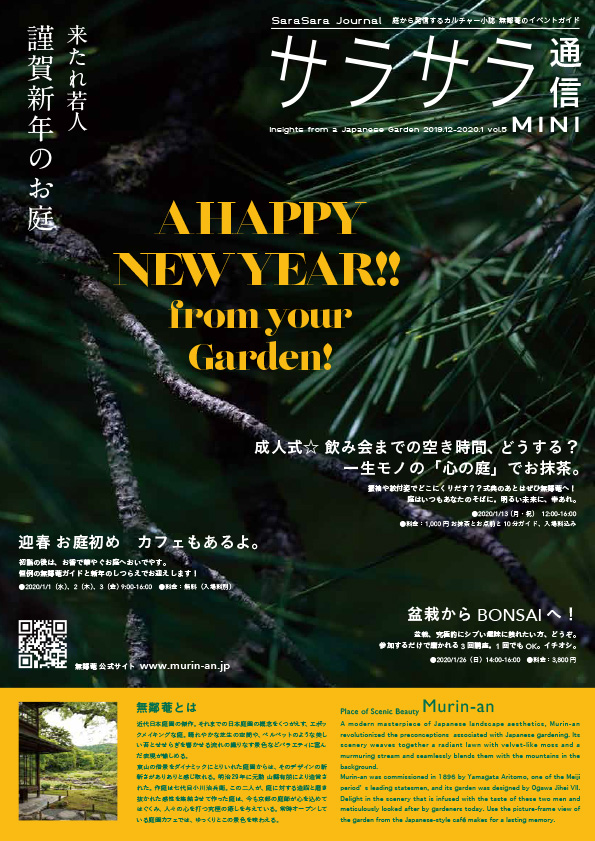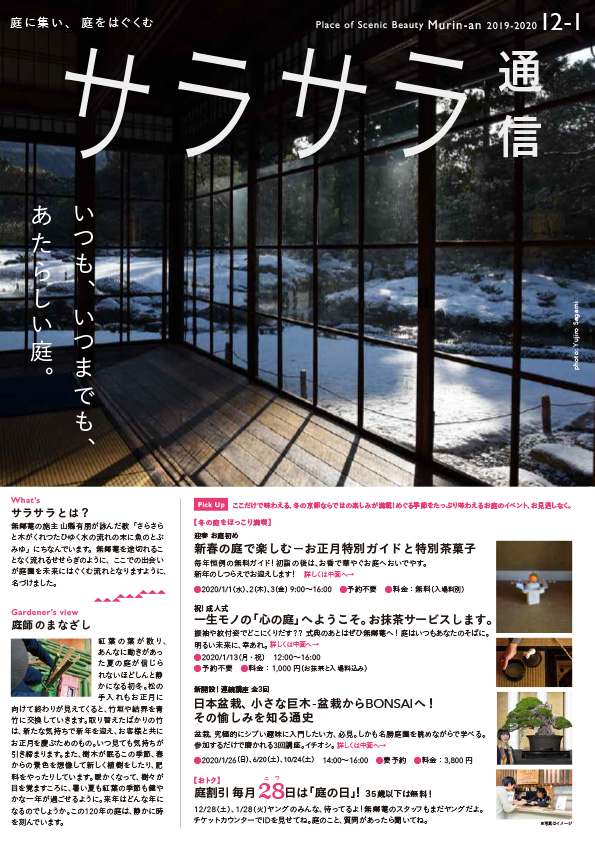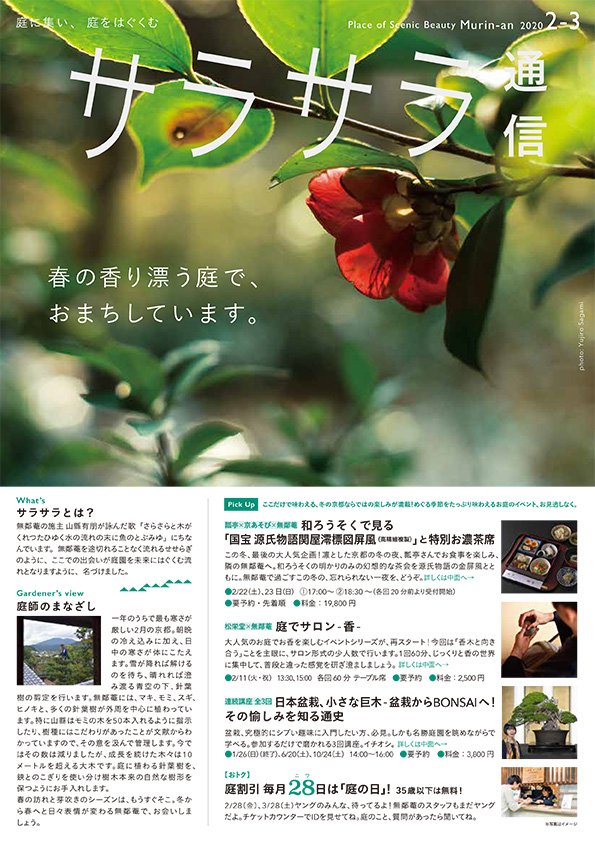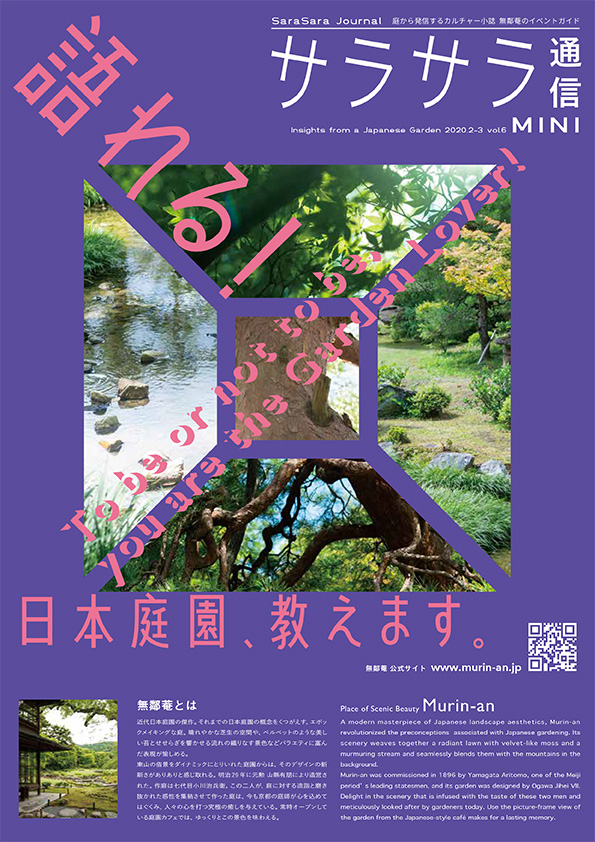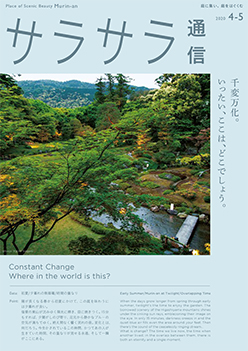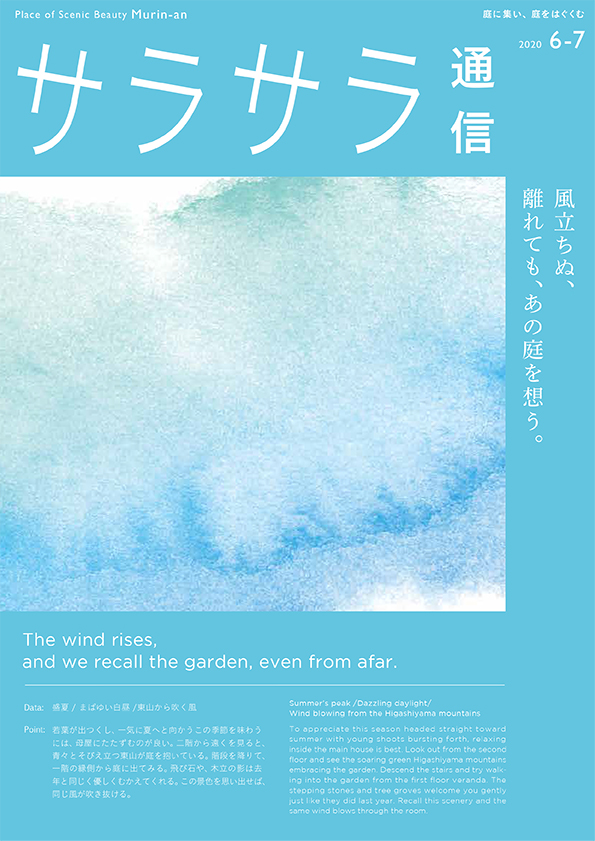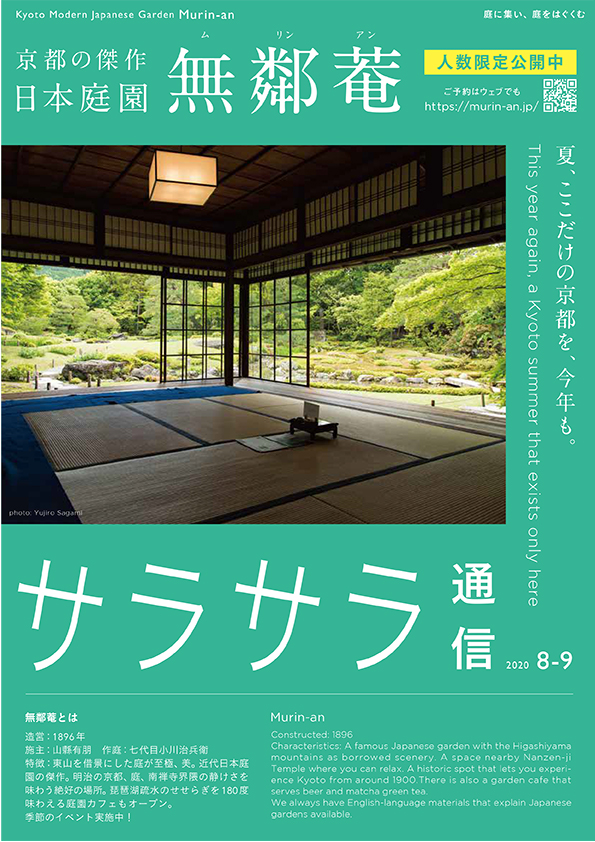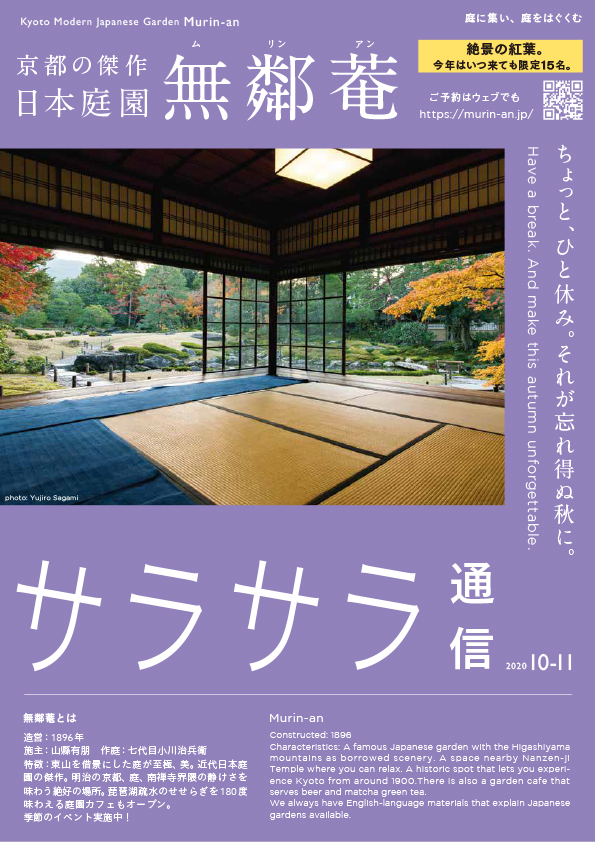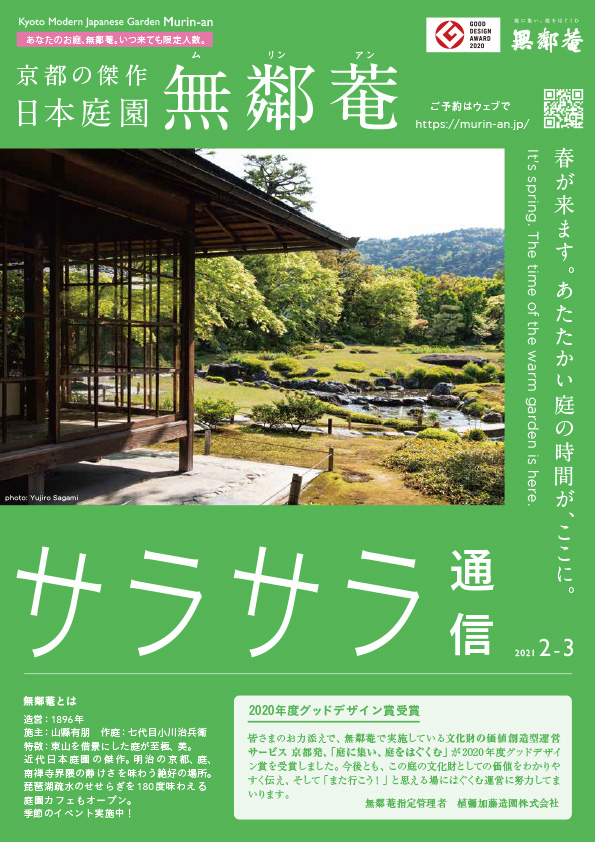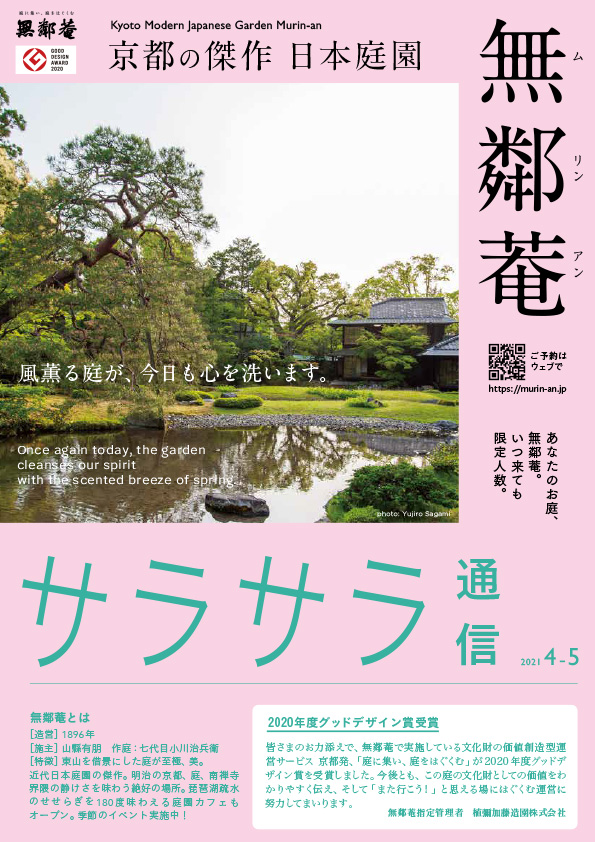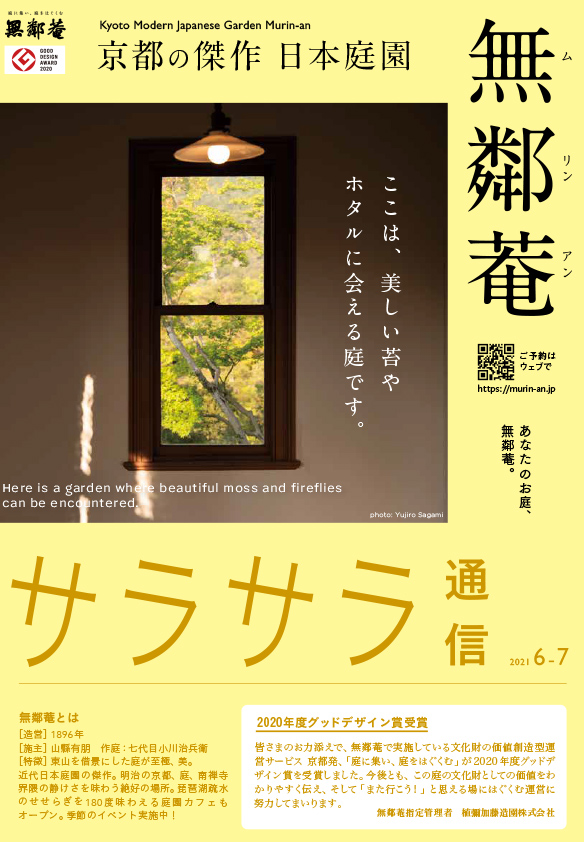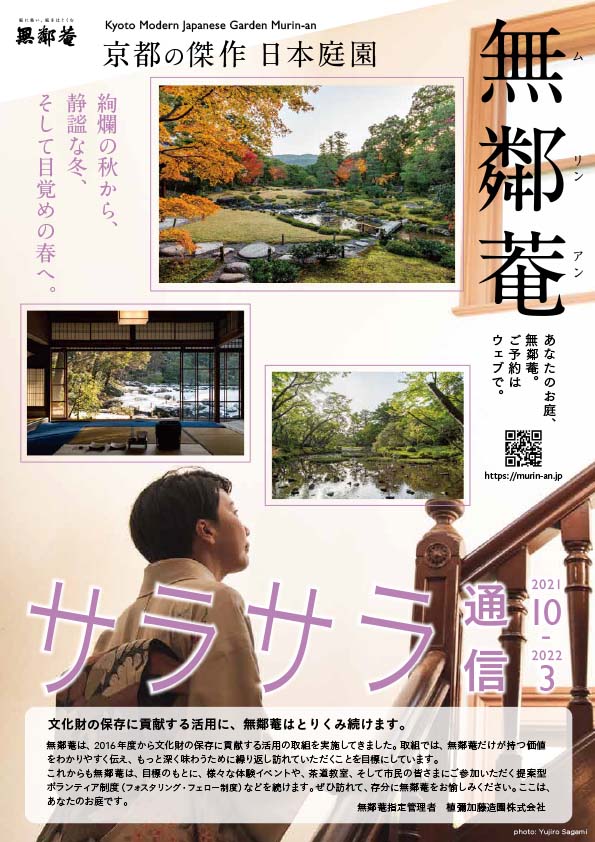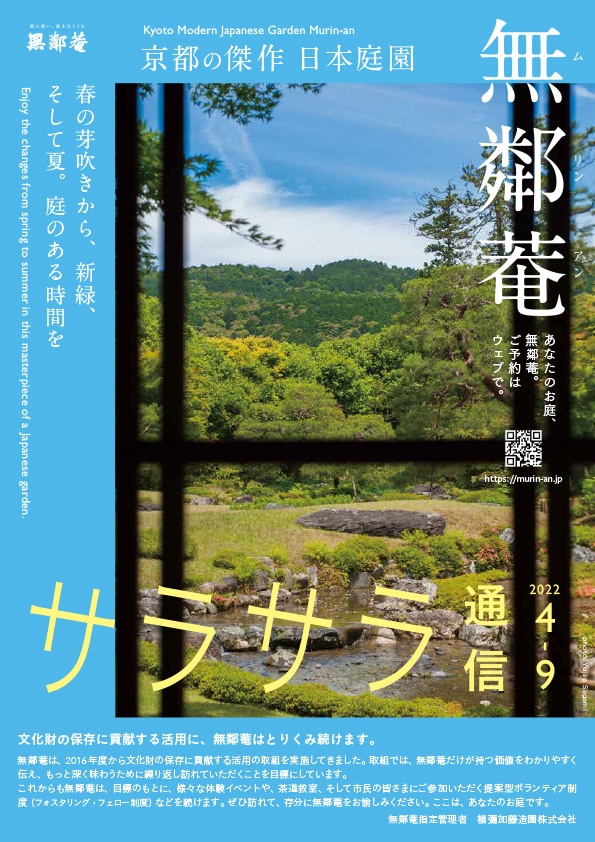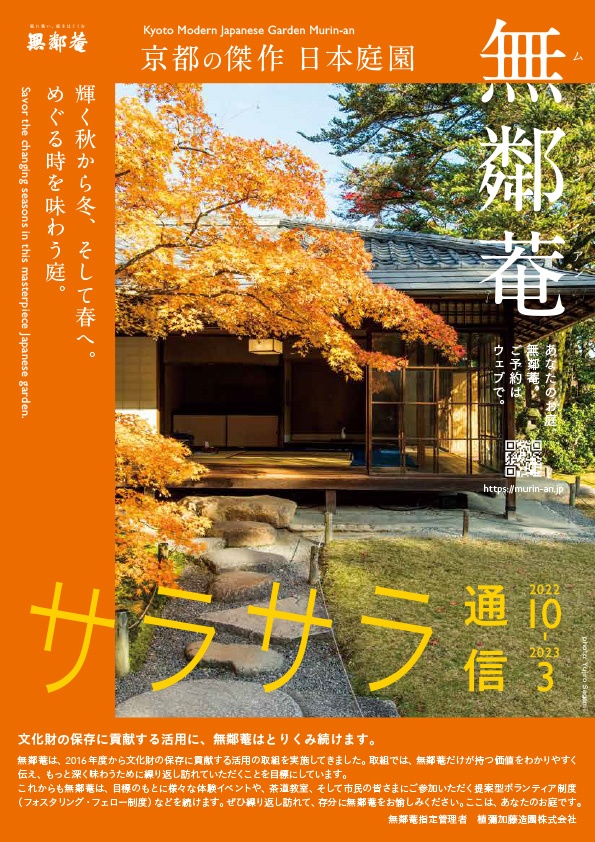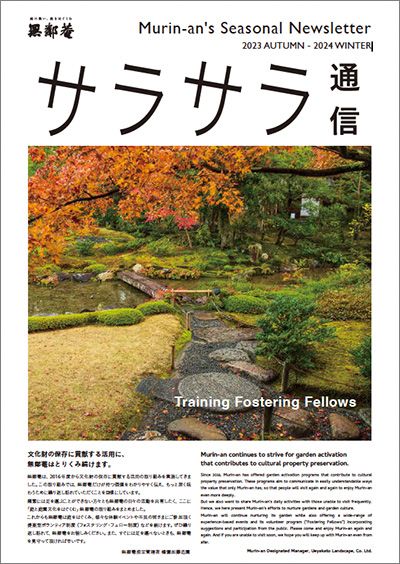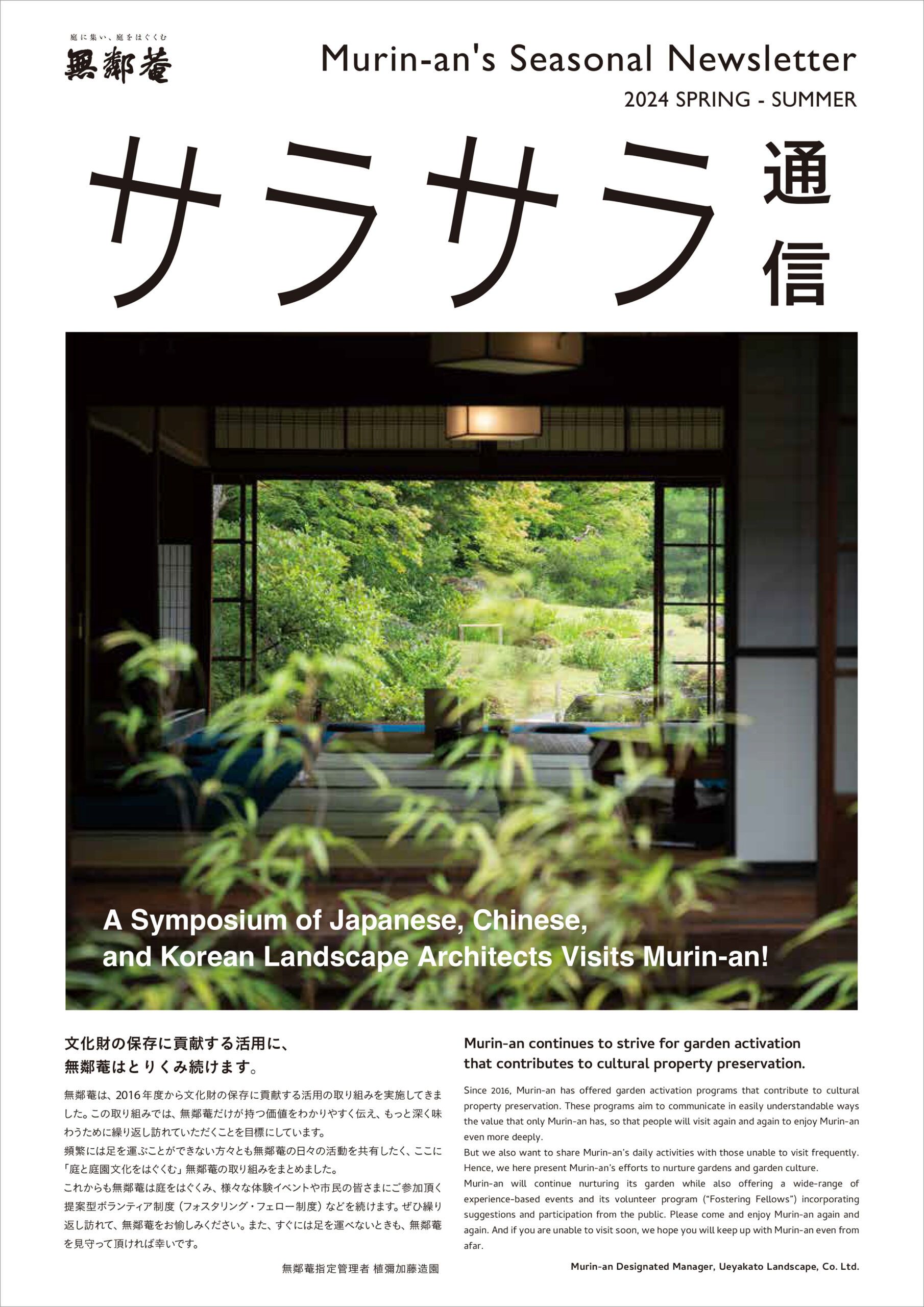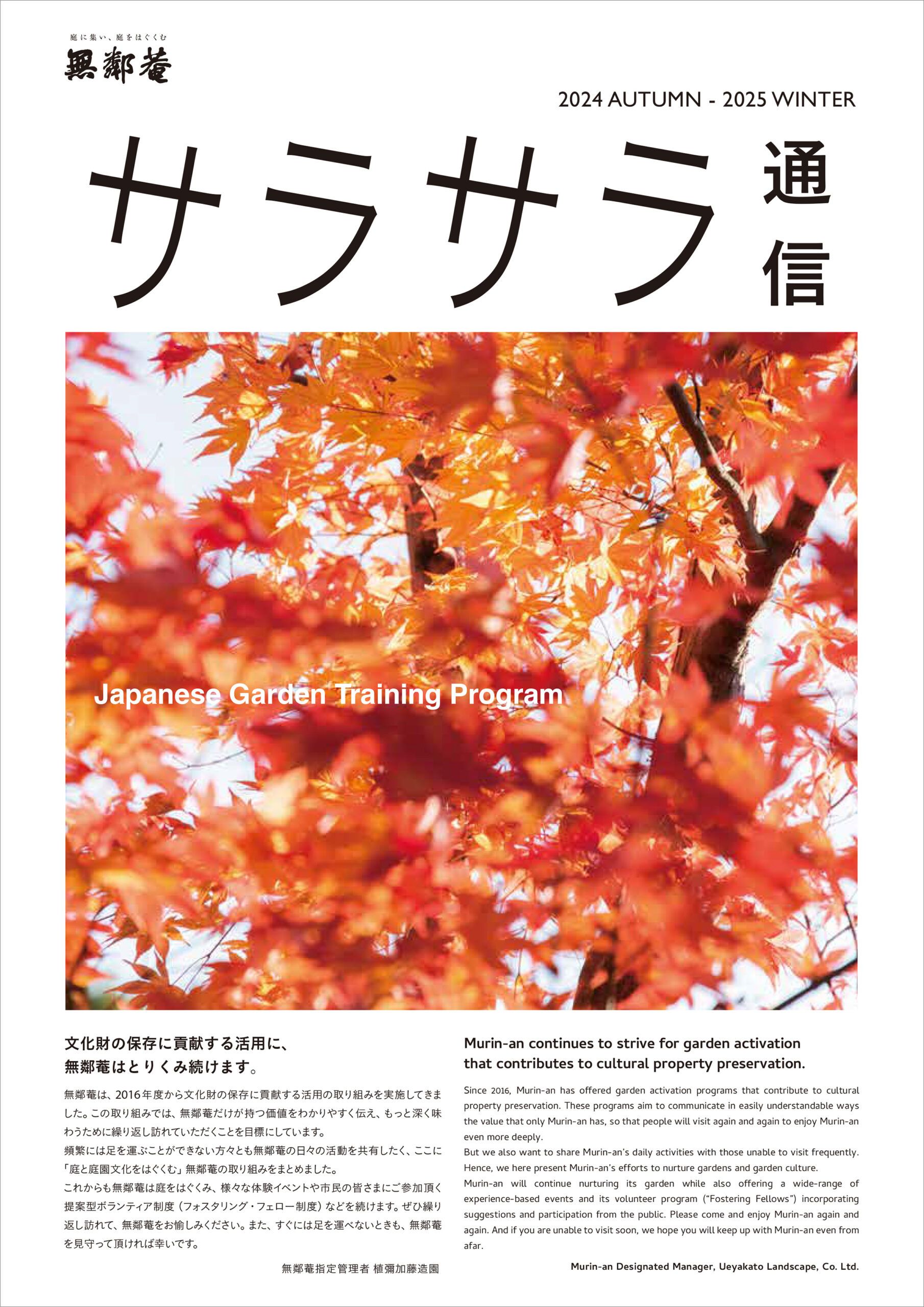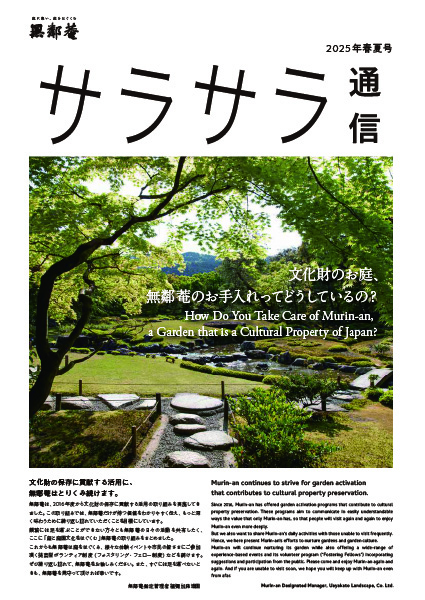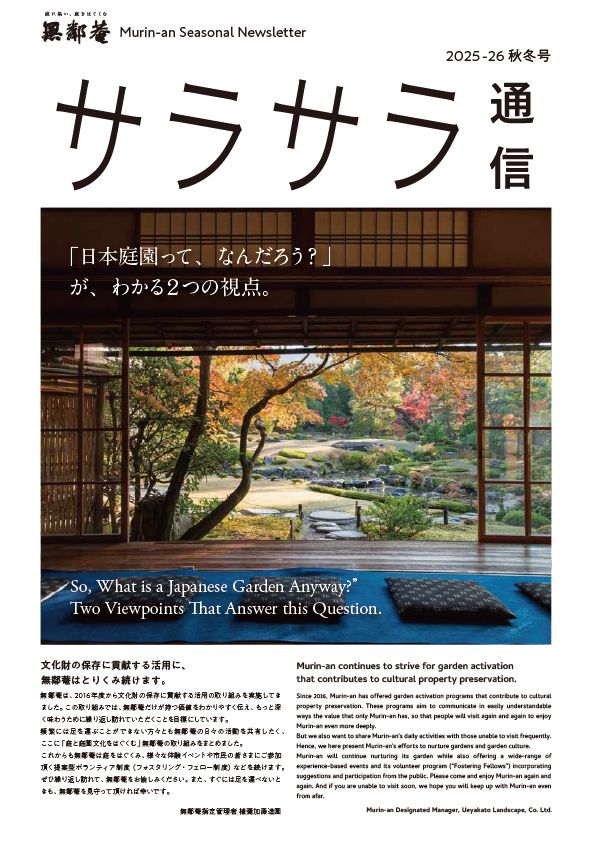Murin-an Periodical
This is the information program of Murin-an Garden.
It provides information on Japanese gardens, invitations to events that help foster the garden and seasonal highlights.
The name of this periodical is Sara-Sara News.
What does “sara-sara” mean? In Japanese, this word is used to evoke a gentle rustle or murmuring sound in nature. We have adopted it from a passage in a poem by Yamagata Aritomo, Murin-an’s original owner. It reads
At the end of a water stream/That murmurs gently as it travels hidden beneath the shade of trees/I see a fish leap
We chose this publication’s title to reflect our hope that, like the ceaseless flow of the murmuring brook flowing around Murin-an, the encounters here will produce a current toward nurturing Japanese gardens for the future.

庭師のまなざし
Now that Murin-an is showing us what it looks like at the peak of summer, we would like to discuss how we maintain its garden path. This garden’s scenery has several layers that can be broadly divided into the distant view made up of the surrounding trees and borrowed mountain landscape seen when we raise our eyes and look off toward the distance, the intermediate view that overlooks the whole garden and the foreground view that when we lower eyes to look around the garden path as we walk upon it.
The care given to the area around the garden path is work done for the foreground view. Human beings often feel cleanness from the space around their feet and thus any messiness in this space leaves a strong impression, even if it does not conspicuously stand out. That is why we give special care to the area surrounding the garden path. Because gravel that crosses over the rope border and becomes strewn into the moss hurts the garden’s scenery, we remove it whenever we find it. The moss is also hurt by any leaves that fall on it and block its sunlight, so we remove these as well. Murin-an’s scenery changes with each step and thus allows us to enjoy scenes ranging from the spaciously serene mountain village landscape to the steep waterfall as though they were part of a story. You could say that having a beautiful garden path by our feet is what supports the overall impression of the garden so that this flow of scenery can go undisrupted.


